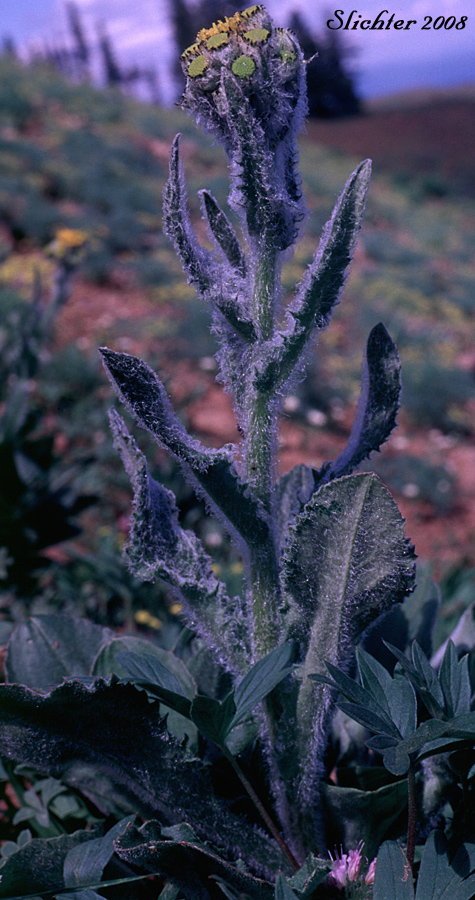Senecio integerrimus var. exaltatus
(formerly Senecio integerrimus var. vaseyi)

Senecio integerrimus var. exaltatus
(formerly Senecio integerrimus var. vaseyi)

Western groundsel is a stout, solitary stemmed perennial from a fibrous-rooted crown which grows from 20-70 cm tall. The stems may be branched slightly. The herbage is cobwebby-hairy when young, and tends to become smooth or glabrous with age. The basal leaves are petiolate with entire to irregularly toothed leaf margins. The basal leaves are commonly from 6-25 cm long and 1-6 cm wide. The stem leaves become reduced upwards, and become sessile.
The several to numerous flower heads often form a congested inflorescence. The involucre is usually 5-10 mm tall with the bracts in one row, each having a pointed, black tip (see upper photo). The flower heads usually have both disk and ray flowers. The rays are usually 6-15 mm long.
Senecio integerrimus var. vaseyi: Flower heads discoid. It may be found from the Cascade and Wenatchee Mts. of central Washington and possibly south through the Cascades to California.
Senecio integerrimus var. exaltatus: Flower heads yellow with both disk and ray flowers. The basal leaves tend to oblanceolate or elliptic in shape. It may be found east of the Cascade crest in dry woodlands and prairies from northern Washington south to the Columbia River gorge and possibly south to California. It is found eastward through Washington and Oregon to northern Idaho and Montana.
Senecio integerrimus var. ochroleucus: Flower heads white or creamy colored. The basal leaves tend to be deltoid or subcordate. (See lower photo.) It may be found in open areas across the range of the species.
Western groundsel is found from the lowlands to well into the mountains on open ground or open woods which are moist in spring and dry during the summer.
Western groundsel is found from southern British Columbia south to California, and east to Saskatchewan and Minnesota.
Western groundsel concentrates alkaloids from the soil, and so is poisonous to livestock. Early in the season, this hasn't become a problem yet, so it might be grazed by sheep, elk, and cattle. It is an indicator of overgrazing on rangeland.
